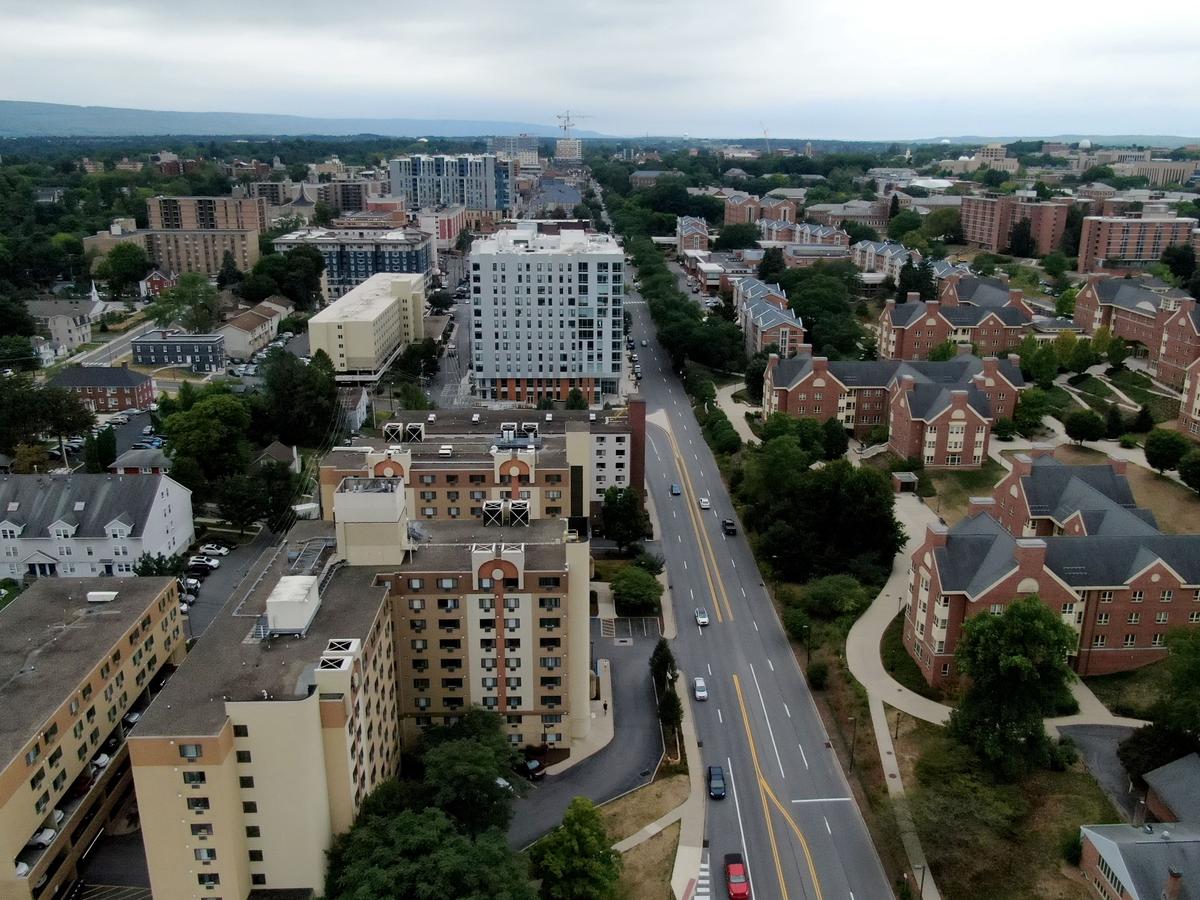Attempt to stop student skyscraper construction at State College sparks big debate about downtown’s future Spotlight PA

This story was created by Spotlight PA’s State College Area Departmentis an independent, nonpartisan newsroom dedicated to investigative and public service journalism in Pennsylvania. Sign up for our local newsletter, Talk of the Town.
State College — Over the past decade, an exclusive 12-story student skyscraper has popped up in downtown State College, dramatically changing the skyline of the small township home to the sprawling Pennsylvania State University.
For some residents and college graduates, the building is an unwelcome sight, changing the character of downtown and portending unwanted development. Others praise high density housing, saying it supports a more sustainable and livable downtown.
High-rise student apartments have long been the subject of controversy. While zoning ordinance amendments have been proposed to discourage developers from building more buildings, the larger question of how zoning changes should be made has also surfaced.
And elected officials and communities are being forced to grapple with the difference between what they want downtown to look like and what the market can support.
State College Borough Council member Deanna Bering said at the council meeting in mid-September:
More than 220 amendments have been made since the last comprehensive zoning rewrite in 1959, Ed LeClear, State College’s planning director, told Spotlight PA.
The latest zoning amendments under consideration are the 2013 amendments (Atherton Street’s (requested by the developers of Metropolitan) is deprecated. area. These NOO bonus areas were concentrated on the edge of downtown to preserve the historic core.
In 2017, the City Council removed the NOO Bonus Area on the west side of downtown, but left it on the east side. The September 12 board decision (which was eventually postponed) was whether to also abolish his NOO bonus area in the East, effectively deterring future high-rise student housing development. did.
Since 2013, four 12-story skyscrapers dedicated to student accommodation have been built downtown, with another under construction.
Community members speaking at conference hearings expressed concern about the end of high-density housing.
“By implementing this change without completely and comprehensively changing all zoning, what you are doing is unfortunately just playing a game of whack-a-mole,” said the former district councilor. Chairman Evan Myers said, “Reducing the height of a building in one place will only cause more and more middle-rise buildings to emerge…and it will creep into the neighborhood and possibly destroy some of them.” There is even.”
He also noted that allowing higher density projects could encourage developers to build environmentally friendly buildings, commercial spaces and inclusive housing.
Several council members agreed that a comprehensive zoning rewrite should be prioritized over hasty zoning fixes that could have unintended consequences.
For council member Gopal Balachandran, skyscrapers and crowds are not a problem. But he is concerned about the lack of transparency around ownership of student housing developments.
City Councilman Peter Marshall is against waiting for a comprehensive rewrite to address the student skyscrapers because he doesn’t want to see any more downtown built.
“It will certainly change downtown. It’s already started,” Marshall said. “It will be strictly a student downtown. Unfortunately, there are many non-students who have lived in this town for years. And they don’t like what they see.”
If the council eventually decides to rescind the 2013 Amendment, the 12-story building can still be built, but the project must include at least 40% commercial space. Housing density will also be lower.
Under current regulations, a 12-story building within a NOO bonus area can have approximately 10 floors of living space. A 12-story building could probably become about six stories of residential space if the 2013 amendment were repealed, LeClear said, noting that’s an approximate figure.
An example of this type of development is the Fraser Center with owner-occupied condominiums, hotels, shops and dining options.
“The low residential density and having to build at least 40% of the project as commercial space will not be of much interest to the market,” says LeClear.
He said the market wants student housing built, not just State College zoning. “This is happening in student towns across the country,” he said.
Members of the Ward Council, Planning Commission, and Zoning Revision Advisory Committee have indicated a preference for shorter buildings, lower densities, more affordability, better energy efficiency, and more expensive construction types.
However, these plans differ from developer priorities. So while thinking about what trade-offs can be made to encourage developers to build what they want, where they want, planners should ask “reality checks (of the parties) against the market.” ‘, LeClear said.
He hopes a comprehensive zoning rewrite draft, which he has been working on for several years, will be completed in 2023.
“It’s important to understand what you want to keep, but it’s also important to be prepared for where you want to go in the future. Also, don’t write code that just reacts to the current situation.”
support this journalism Help energize local news in north central Pennsylvania. spotlightpa.org/statecollegeThe spotlight PA is foundation and readers like you Those working in public service journalism with accountability and results.
https://www.spotlightpa.org/statecollege/2022/09/state-college-high-rises-student-housing-development-zoning/ Attempt to stop student skyscraper construction at State College sparks big debate about downtown’s future Spotlight PA


